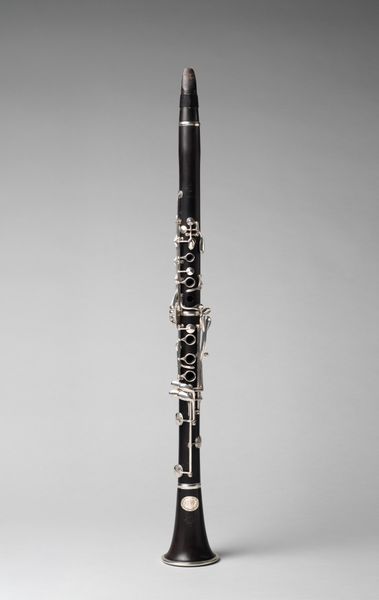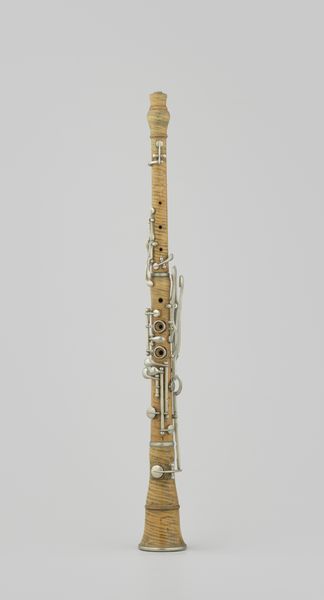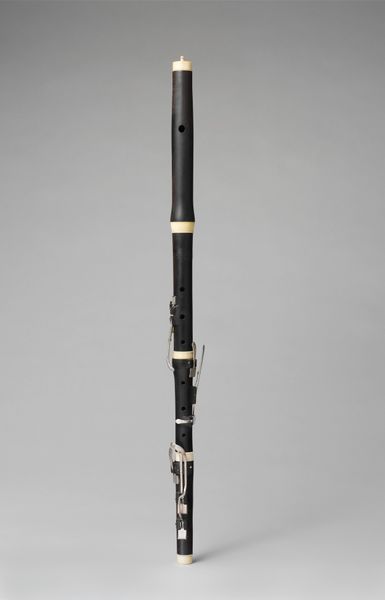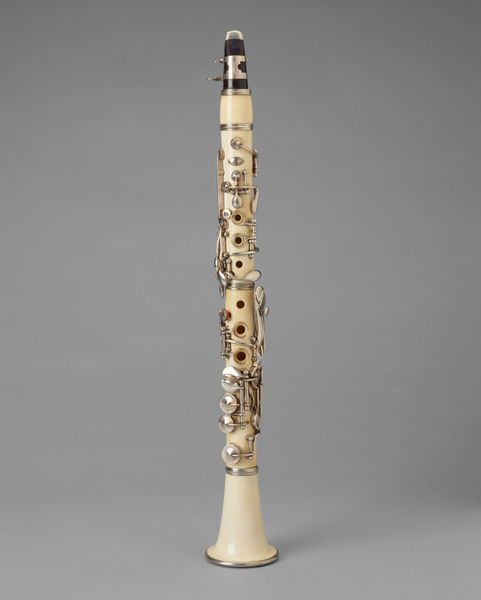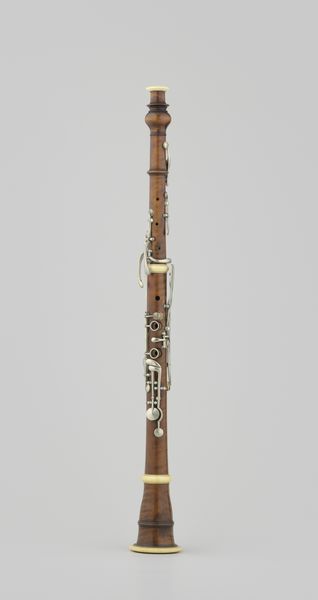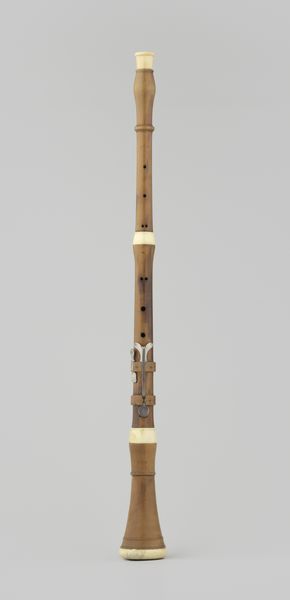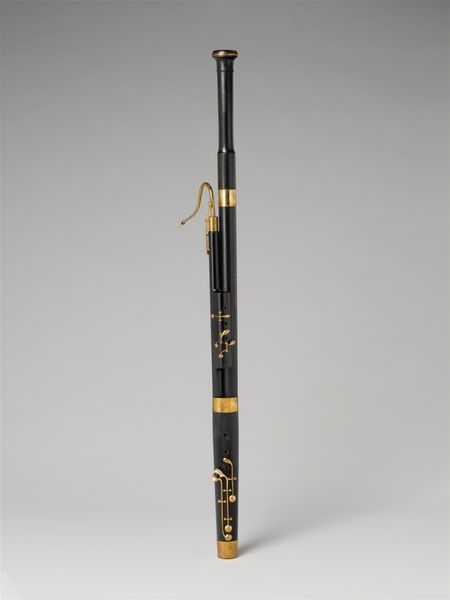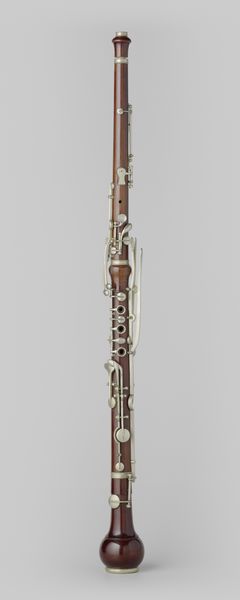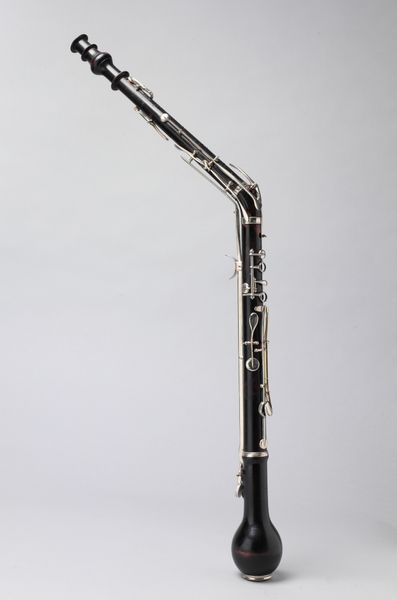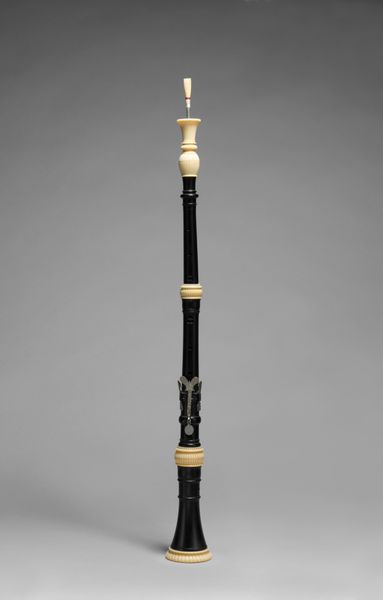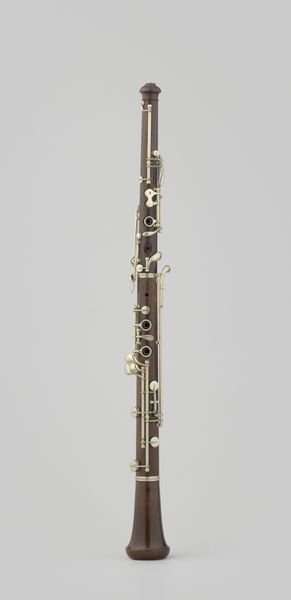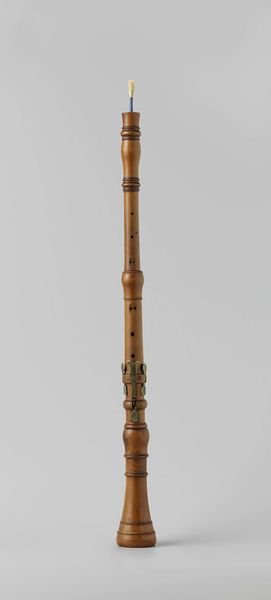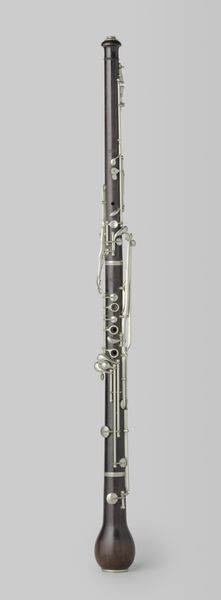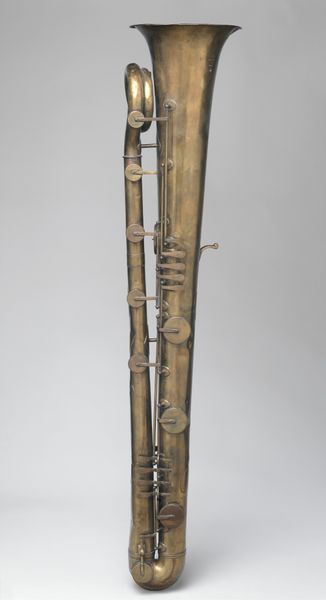
photography
#
photography
#
musical-instrument
Dimensions: L.: 55.9 cm (22 in.); Bell Diam. 6.9 cm (2-3/4 in.)
Copyright: Public Domain
Curator: This is a photograph from between 1860 and 1890, presenting an oboe crafted by Theodore Berteling. It's now held in the collection of the Metropolitan Museum of Art. Editor: It strikes me immediately how sculptural the instrument appears in this image, its form meticulously highlighted. The play of light across its surface really accentuates the polished ebony wood and gleaming metal keys. Curator: Indeed, considering its period, the object signifies broader narratives of industrialized musical instrument manufacture alongside the increasing professionalization of orchestral performance. Access to and dissemination of "high culture" through this medium could have enabled cross cultural opportunities, but often depended on entrenched class hierarchies, something to consider. Editor: Absolutely, I agree that those considerations are worth raising. Looking at this form more abstractly, the vertical orientation and intricate network of keys contribute to a complex yet harmonious visual structure. Each element seems perfectly placed. It has almost a calligraphic quality, don't you think? Curator: Yes, you have a point about calligraphy. The visual order that you pointed out can be connected with evolving attitudes of aesthetics in that time and context, like a form of material semiotics representing wealth and status in a time when empire shaped people’s outlook. And the potential of music itself as a form of control. Editor: Hmm... Control? Perhaps. I tend to focus on the inherent qualities of form. In this composition, it is quite interesting how the cool metallic tone interacts with the wood grain. It guides the eye, almost like musical notation does for an instrumentalist! Curator: So, we see this oboe and perhaps also perceive the global movements of materials, markets and, crucially, meanings—not just sounds! These narratives challenge assumptions about what art represented then, and perhaps still represents now. Editor: A fascinating perspective, enriching our visual analysis and moving far beyond! Thank you! Curator: And thank you, for drawing my attention back to the object itself; seeing, after all, always needs refocusing.
Comments
No comments
Be the first to comment and join the conversation on the ultimate creative platform.
